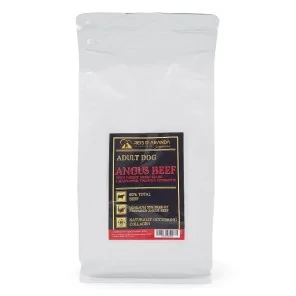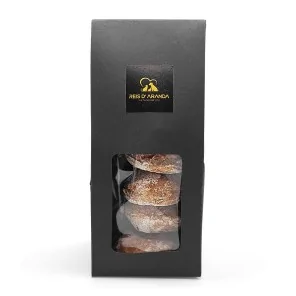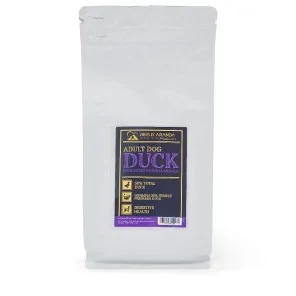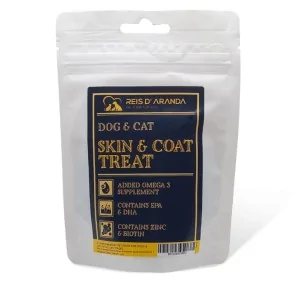The Tornjak originated from genetically homogeneous, almost extinct, indigenous shepherd dogs. These dogs have...
THE SHAR PEI
INTRODUCTION
The shar pei (Chinese 沙皮狗 and pinyin shāpí gǒu, lit. ‘sandy skin’) is a breed of dog originating in southern China and has been recorded from around 206 BC.
THE ORIGIN OF THE SHAR PEI
There are some breeds of dog that have been known from very ancient times, as evidence has been found on everyday objects found in excavations. One such breed is the Shar pei, which is believed to have originated in China and for which drawings have been found on pottery vessels dating back to over 200 BC.
There are many things that set the unique Chinese Shar-Pei apart from any other breed. For starters, the name is unique. The words ‘shar-pei’ translate as sandy skin or rough skin. This is an apt description, as the Shar-Pei was bred to have a very rough ‘horse coat’. Its wrinkles, whether by natural evolution or selective breeding, are unique to this dog. His face, often described as that of a ‘hippopotamus’, and with his deep-set eyes, give the Shar-Pei an appearance often described as stern and immobile. The blue/black pigmentation of the tongue is also a rare trait to have, found in only a handful of animals worldwide.
The Chinese Shar-Pei as a breed may not actually be as old as previously thought. Unfortunately, due to the many changes of power in China, there is not much definite about the history of the breed. One of the most widely accepted theories is that it was once a multi-purpose working dog on lower class farms, performing a variety of jobs such as catching vermin, herding livestock and even guarding the grounds. Due to its physical properties, wrinkles, short rough coat, deep-set eyes and small ears, it is also commonly accepted that this dog was used for fighting, and was even bred for fighting during a time when dog fighting was popular. Due to the rise of the Roman Empire's trade in the West, larger dogs, such as mastiffs, found their way into the fighting ring, proving too much for the Shar-Pei and thus leading the Shar-Pei to return to guarding and other farm work. Due to the similarity in the rare blue/black pigmentation of the mouth, many are quick to conclude that the Shar-Pei is distantly related to the Chow Chow, also from the region of China. Apart from the unusual pigmentation, no other evidence supports this theory.
When Mao Tse Tung assumed power in the new People's Republic of China in 1943, he declared dogs and other pets a luxury, and they became heavily taxed. Many could not afford these expenses, especially in times of hardship. Soon after, Mao Tse Tung declared that pets should be a status symbol of the privileged, and shortly thereafter called for the extermination of the pets of anyone below elite status. Most of the dogs were executed, and it was then that the Shar-Pei was almost annihilated. Many people managed to smuggle the animals into British-occupied Hong Kong, Thailand and Canada.
One person of note is Matgo Law, owner of Down-Homes Kennels, who was one of the first to import Chinese Shar-Peis into the United States. He was the leader at the forefront of the ‘Save the Shar-Pei’ movement. His letter was published in the April 1973 issue of DOGS magazine. His dogs were some of the first to be imported into the United States. More than 2,000 applications were made in the USA to adopt a Hong Kong Shar-Pei.
In the 1970s and 1980s, inbreeding was used to try to recover the species. Major problems began to appear, due to poor breeding habits and people trying to take out negative traits in order to sell more puppies more quickly. Problems that can be seen in larger breeds, such as hip and elbow dysplasia, became a major problem in the breed for a long time.
Throughout history, there are several Shar-Pei that stand out in particular. One such dog is Down-Homes Kung Fu, the first Chinese Shar-Pei imported into the United States and registered with the CSPCA. Born on May 28, 1973, he was imported by Matgo Law and arrived in the United States on July 6, 1973, where he was picked up by De-Jon and Victor Seas of Caledonia, Ohio. Another dog of magnitude is Ch. Sis Q's Fu Man Chew. Born on October 21, 1978, he was the first Shar-Pei to receive a confirmation title.
WHAT IS THE SHAR PEI LIKE?
GENERAL APPEARANCE: This is a medium sized, active, compact, square, short backed dog. The wrinkles of the skull and withers, the small ears and the ″hippopotamus″ muzzle impart a unique appearance. Males are more robust than females.
IMPORTANT PROPORTIONS: The height of the Shar Pei, from withers to ground, is approximately equal to the length of the body from point of shoulder to point of buttock, especially in males.
The length from the nose to the nose-forehead depression is approximately equal to the length from the nose-forehead depression to the occiput.
HEAD: Rather large in proportion to the body. The wrinkles forming on the forehead and cheeks extend downwards to form the dewlap.
CRANIAL REGION:
SKULL: Flat and broad. Naso-frontal depression.
STOP: Moderate.
FACIAL REGION:
TRUFFLE: Large, broad, preferably black, but any other colour in harmony with the coat colour is permissible. Nostrils well open.
NOSE: Characteristic of the breed. Broad from root to tip of nose, with no signs of tapering. The lips and the upper part of the muzzle are well fleshy. A bulge at the bridge of the nose is permissible.
MOUTH: Tongue, palate, gums and lips preferably bluish black. Tongue with pink patches is permitted. Solid pink tongue is considered highly inappropriate. In dogs with a dilute coloured coat, the tongue is solid lavender.
JAWS / TEETH: The jaws are strong, with a perfect scissor-like articulation (the upper incisors overlapping the lower incisors in close contact and at right angles to the jaws). The fleshiness of the lower lip should not be so excessive as to interfere with the function of the jaws.
EYES: Dark in colour, almond-shaped with a frown. A lighter colour is permissible in dogs with a thinned coat. Neither the skin around the eyes, nor the folds, nor the hair, should impede the normal function of the eyeball or eyelid. Any evidence of irritation of the eyeball, conjunctiva or eyelids is considered highly undesirable. Entropion should not be present.
EARS: Very small, rather thick, equilaterally triangular in shape. The tips are slightly rounded. Set on high, with the tips pointing towards the eyes. Set well forward over the eyes, set wide apart and close fitting to the skull. Erect ears are highly undesirable.
NECK: Of medium length, strong, well set on the shoulders. Loose skin under the neck should not be excessive.
BODY: The presence of folds of skin on the body in adult dogs is considered highly undesirable, except at withers and root of tail, where folds should be moderate.
TOPLINE: Sloping slightly behind the withers, then rising slightly over the loin.
BACK: Short and strong.
LOIN: Short, broad, slightly arched.
Croup: Rather flat.
CHEST: Broad and deep; the region of the sternum reaches to the elbow.
BOTTOM LINE : Rising slightly below the loin.
TAIL: Thick and rounded at the base, tapering gradually to a fine point. Set on high, a distinctive characteristic of the breed. May be carried high and curved, carried in a tight curl, curved over the back or drooping to one side or the other of the back. Absence of tail or docked tail is highly undesirable.
LIMBS
FOREQUARTERS: Straight, of moderate length, strong boned. No wrinkles present on forelegs.
Shoulders: Muscular, well set on and sloping.
METACARPUS: Slightly sloping, strong, flexible.
HANDS: Moderate size, compact, not flattened. The toes are strongly jointed. No dewclaws on the hind feet.
HINDQUARTERS: Muscular, strong, moderately angulated. Seen from behind, they are perpendicular to the ground and parallel to each other. The presence of wrinkles on the thighs, legs, metatarsals and thick skin on the hocks are undesirable.
Hocks: Well let down.
FEET: Moderate in size, compact, not flat. The toes are strongly jointed. No dewclaws on hind feet.
GAIT / MOVEMENT: The trot is the preferred movement. It is free, agile, balanced, with good reach of the forelegs and strong drive of the hindquarters. When the dog increases speed, the feet tend to converge in a central line. Stilted gait is undesirable.
COAT: Short, harsh, bristly coat. On the trunk, the coat is straight and parted, but on the limbs it is close lying. No undercoat present. The length of the coat can vary from 1 to 2.5 cm. It should never be clipped.
COLOUR: All solid colours, except white, are acceptable. The tail and the back of the thighs are often of a lighter colour. Darker shading is permitted along the back and on the ears.
SIZE
HEIGHT AT CROSS: 44 to 51 cm (17.5 to 20 inches).
FAULTS: Any departure from the foregoing points should be considered a fault and the seriousness with which the fault should be regarded should be in exact proportion to its degree and its effect upon the health and welfare of the dog.
SERIOUS FAULTS:
- Joint not scissor-jointed (as a transitional measure, a very slight prognathism of the upper body is permissible).
- Pointed muzzle.
- Spots on the tongue (except pink spots).
- Large ears.
- Low set tail.
- Coat longer than 2.5 cm.
DISQUALIFYING FAULTS:
- Aggressiveness or extreme shyness.
- Any dog showing clear signs of physical or behavioural abnormalities.
- Flat front part of head, with pronounced prognathism on top; prognathism underneath.
- Solid pink tongue.
- Lower lip folded inwards, impeding the bite.
- Eyes round and bulging; entropion or ectropion.
- Skin, folds or hair impeding the normal function of the eyes.
- Erect ears.
- Absence of tail or short tail from birth.
- Presence of thick folds of skin on trunk and limbs (except at withers and root of tail).
- Colour not solid (albino, brindle, patchy, spotted, black and tan, saddle colour).
WARNING: Any artificial physical alterations made to the Shar Pei (especially to the lips and eyelids) eliminates the dog from competition.
N.B.:
- Male dogs should have two apparently normal appearing testicles fully descended into the scrotum.
- Only functionally and clinically healthy dogs, with breed typical conformation, should be used for breeding.
SHAR PEI HEALTH
The Shar Pei, like any breed, may be predisposed to certain health problems. Being aware of these conditions and taking preventative measures is key to ensuring a full and healthy life for your pet.
- ENTROPION: An eye condition in which the eyelid rolls inward, causing irritation to the eye.
- HIP DISPLASIA: An inherited condition in which the hip joint does not develop properly, which can cause pain and difficulty walking.
- SKIN PROBLEMS: Due to the wrinkled nature of its skin, the Shar Pei can be prone to skin infections and allergies.
- SHAR PEI FEVER: Also known as Shar Pei family fever, it is an inflammatory disease that can affect various parts of the body.
SHAR PEI PERSONALITY
They are intelligent, active and quite independent dogs, which can complicate their education, as they also tend to be stubborn. This is why they need experienced handlers with a firm and persevering hand. Of course, in no case resorting to violence. In a family, well socialised and educated, they will be calm and loyal. Otherwise they may develop nervousness and even aggression in the most serious cases. They have become accustomed to living in city flats, but are equally at home in country houses. Problems may arise with other dogs.
CONCLUSION
The Shar Pei, that splendid breed of dog that attracts our attention so much -especially when we are small- and that, knowing it, we cannot but recommend it to be chosen as a life companion. We say ‘knowing it’ because it is a breed that undoubtedly needs a lot of care and this is something we must know before bringing it into our home and integrating it into our family.
Leave a comment
Log in to post comments
















